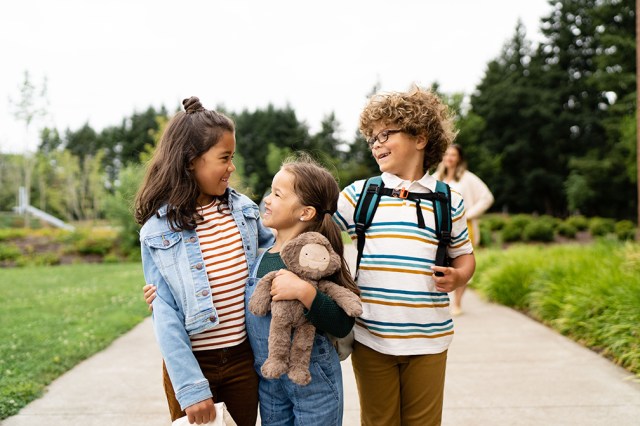Every day, the world reinforces the idea that we need something outside of ourselves to confirm our confidence. These messages can look like many things—seeking external validation through likes on social media, getting a “well done” from your boss, or perhaps receiving a good grade. But here’s the truth: confidence isn’t something to be discovered outside of ourselves. Confidence, it turns out, comes from within.
Very young children experience the world with this boundless confidence. They don’t shy away from an opportunity to try something new because they worry what others might think. They don’t second-guess themselves before taking on a challenge. But as they grow, certain factors begin to test their confidence. Soon enough, shame and embarrassment might start to sink in.
Thankfully, there are ways we can help the children in our lives reconnect with their sense of self-trust and inner wisdom. When we encourage them to look within themselves for inner strength, they’re reminded that the gifts they bring to the world are special and unique. Looking for a little guidance to help you get started? Keep reading for three ways you can help your child connect with their inner confidence today.
Tip #1: Set an Example
Here’s the truth: Children and adults alike—we all struggle with confidence! If we adopt the mentality that our confidence depends on our actions and achievements, we’ll continue to search for confidence outside of ourselves. But as with most things, one of the best ways we can all build confidence is through practice. Can you think of a task or a new skill that you’ve been nervous to try? Acknowledge your anxiety and proceed with a positive, optimistic belief in yourself.
Of course, this isn’t to say that you have to be perfect or even pretend that you are! When your child sees you feeling your fear, accepting the possibility of failure, and proceeding with bold self-confidence and bravery, they’ll be able to follow your example for how to practice those confident behaviors themselves.
Tip #2: Share a Moment of Failure
Talking with our children about our own imperfect experiences is an effective way to open up a dialogue about authenticity and following our inner wisdom. Reflect on a time when you noticed your desire to seek something outside of yourself to feel worthy. What were you chasing? Why did you want it? How did you think it would make you feel once you achieved it?
It can be tempting to aim for perfection, especially in a world that values performance and achievement. But by practicing self-acceptance ourselves and sharing how we’ve overcome feelings of self-doubt, we can remind children that everyone makes mistakes, and it doesn’t have to impact how we feel about ourselves. Teaching kids to learn from their mistakes helps them get comfortable with failing forward and understand that confidence doesn’t depend on anything external.
Tip #3: Remind Your Child That the Process Is What Counts
It’s easy to focus our attention on the end result. But when we allow ourselves to be motivated by a final goal, we lose sight of all the opportunities for learning and growth along the way. As our confident friend Bigfoot reminds us in the new Slumberkins book, “The Confidence Within”:
“I’ve got it, my friends”
Bigfoot said, feeling wise.
“We are good and we’re brave,
even without the grand prize.”
Learning to persevere through challenges, and understanding that confidence doesn’t depend on succeeding every time, is crucial to a child’s ability to build resilience. When children are able to separate their sense of strength from outward success, they’re able to recover their sense of inner-knowing and self-trust.
It’s important to remember that we all have different gifts to offer. In our world today, we’re each presented with many barriers to experiencing self-confidence. But the more we support the truth that confidence comes from within and align our words and actions with that belief, the easier it becomes to help children recover and return to their own sense of confidence.











